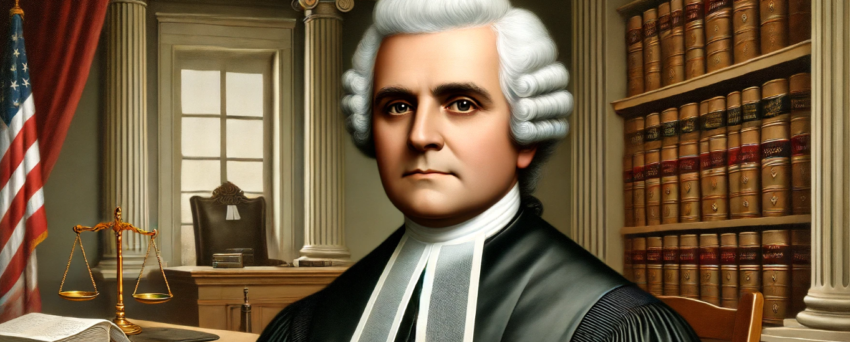| Listen to our audio presentation: History of the US Supreme Court |
The Supreme Court of the United States: A Historical Overview
The Supreme Court of the United States stands as a testament to the nation’s commitment to justice and the rule of law. As the highest court in the land, it plays a pivotal role in interpreting the Constitution and ensuring the consistent application of justice across the country. Its history is rich and complex, marked by landmark decisions and evolving judicial philosophies.
Origins and Establishment
The Supreme Court was established by Article III of the U.S. Constitution, which was ratified in 1788. The Judiciary Act of 1789 laid the groundwork for the federal judiciary, including the Supreme Court, which officially began operations in 1790. The Court initially comprised six justices, including a Chief Justice, and met for the first time in the Royal Exchange Building in New York City, the nation’s first capital.
Early Challenges and Landmark Cases
The early years of the Supreme Court were marked by limited influence and authority. It wasn’t until Chief Justice John Marshall’s tenure (1801-1835) that the Court began to assert its role as a co-equal branch of government. Marshall’s leadership and the landmark case of Marbury v. Madison (1803) established the principle of judicial review, giving the Court the power to strike down laws that violate the Constitution.
Expansion and Civil War Era
As the nation grew, so did the Court. The number of justices fluctuated, reaching as many as ten before settling at nine in 1869, a configuration that remains today. The Court’s decisions during the Civil War and Reconstruction periods reflected the turbulent times. Cases like Dred Scott v. Sandford (1857), which denied citizenship to African Americans, and Plessy v. Ferguson (1896), which upheld racial segregation, demonstrated the Court’s influential but often controversial role in shaping social policies.
The New Deal and Judicial Activism
The 20th century saw the Supreme Court at the center of many pivotal moments in American history. During the 1930s, President Franklin D. Roosevelt’s New Deal legislation faced significant challenges from the Court, leading to the famous “court-packing” plan, which ultimately failed but pressured the Court to shift its stance on economic regulation.
The mid-20th century ushered in an era of judicial activism, where the Court took a more active role in addressing social issues. Landmark decisions such as Brown v. Board of Education (1954), which declared racial segregation in public schools unconstitutional, and Roe v. Wade (1973), which recognized a woman’s right to choose an abortion, exemplified the Court’s expanding influence on American society.
Modern Era and Ongoing Debates
In recent decades, the Supreme Court has continued to shape the legal and political landscape of the United States. Decisions on issues such as same-sex marriage (Obergefell v. Hodges, 2015), healthcare (National Federation of Independent Business v. Sebelius, 2012), and immigration (Department of Homeland Security v. Regents of the University of California, 2020) highlight the Court’s ongoing relevance in contemporary debates.
The composition of the Court has also been a focal point of political contention, with nominations and confirmations of justices often reflecting deep partisan divides. The appointments of justices like Clarence Thomas, Sonia Sotomayor, and Amy Coney Barrett underscore the impact of presidential elections on the Court’s future direction.
The Supreme Court’s history is a narrative of evolution and adaptation, reflecting the broader currents of American political and social change. From its humble beginnings to its current status as a central arbiter of constitutional issues, the Court remains a crucial pillar of American democracy, tasked with the profound responsibility of interpreting the nation’s most fundamental legal document.
The first Supreme Court of the United States, established by the Judiciary Act of 1789, originally had six justices. However, here are the first seven justices, including the original six and the first additional justice appointed:
- John Jay (Chief Justice) – Appointed by President George Washington, he served from 1789 to 1795.
- John Rutledge (Associate Justice) – Appointed by George Washington, he served from 1789 to 1791. He later became the second Chief Justice in 1795 but served only briefly.
- William Cushing (Associate Justice) – Appointed by George Washington, he served from 1789 to 1810.
- James Wilson (Associate Justice) – Appointed by George Washington, he served from 1789 to 1798.
- John Blair Jr. (Associate Justice) – Appointed by George Washington, he served from 1789 to 1796.
- James Iredell (Associate Justice) – Appointed by George Washington, he served from 1790 to 1799.
The seventh justice, appointed after the initial six, was: 7. Thomas Johnson (Associate Justice) – Appointed by George Washington, he served from 1792 to 1793.
These justices helped establish the foundations of the Supreme Court and set important precedents for the fledgling judicial system.

